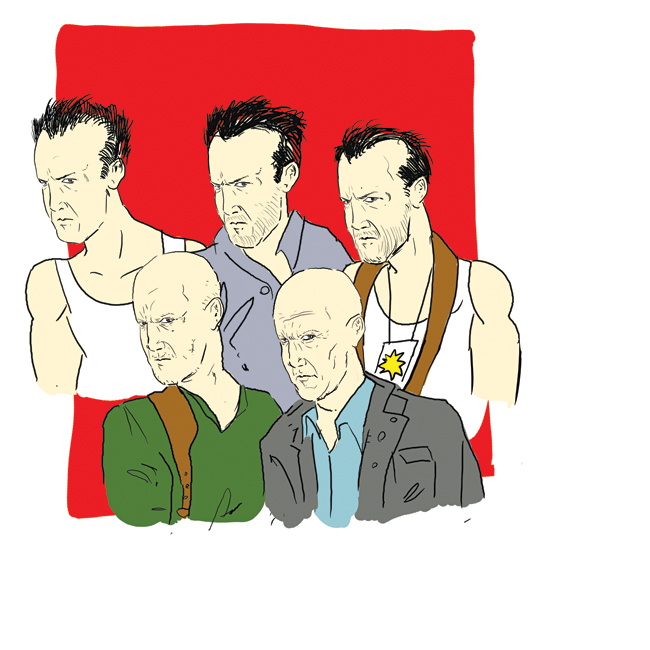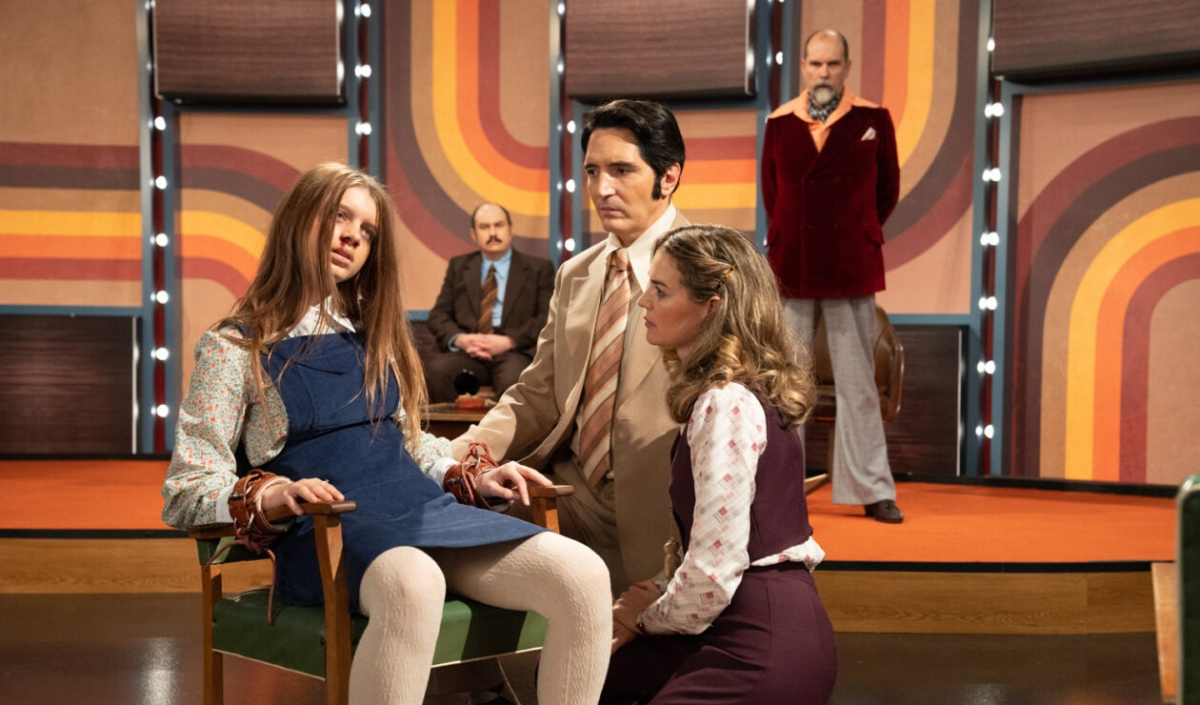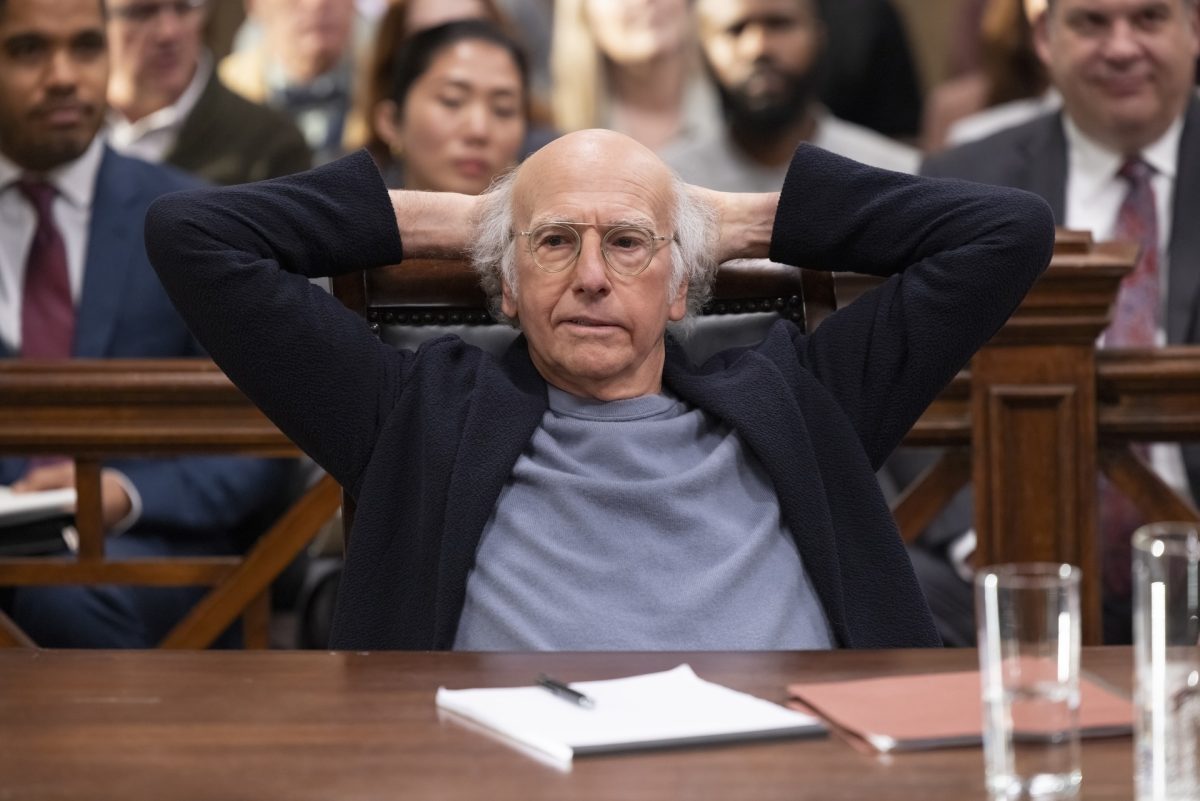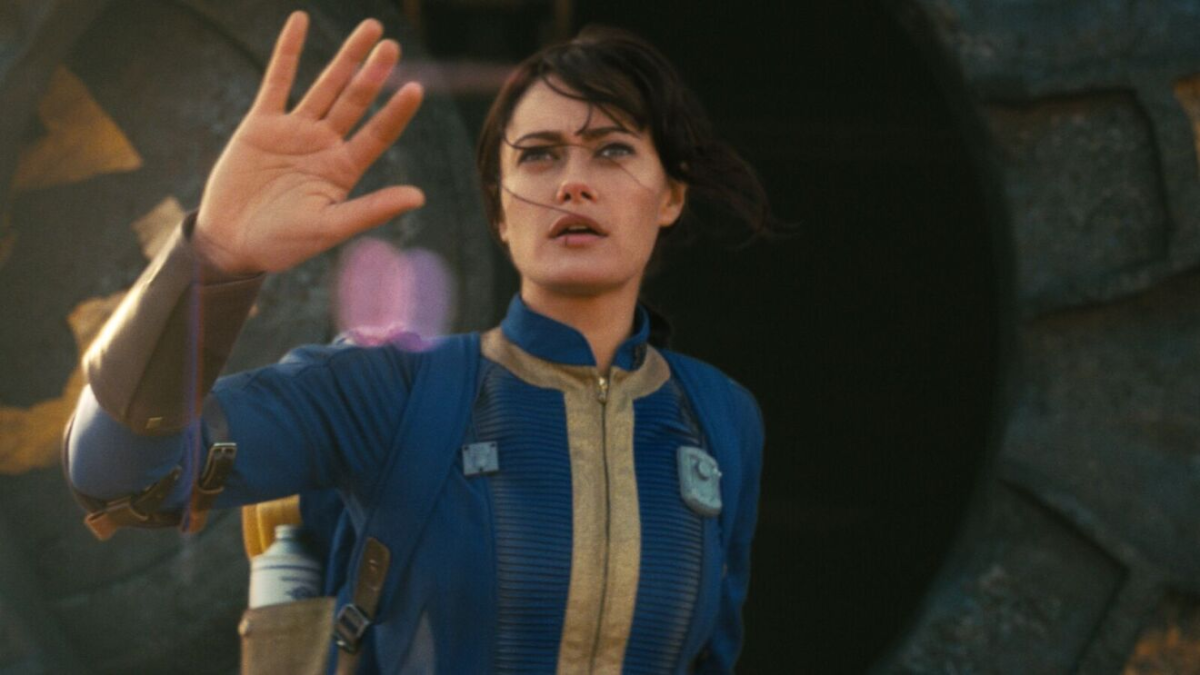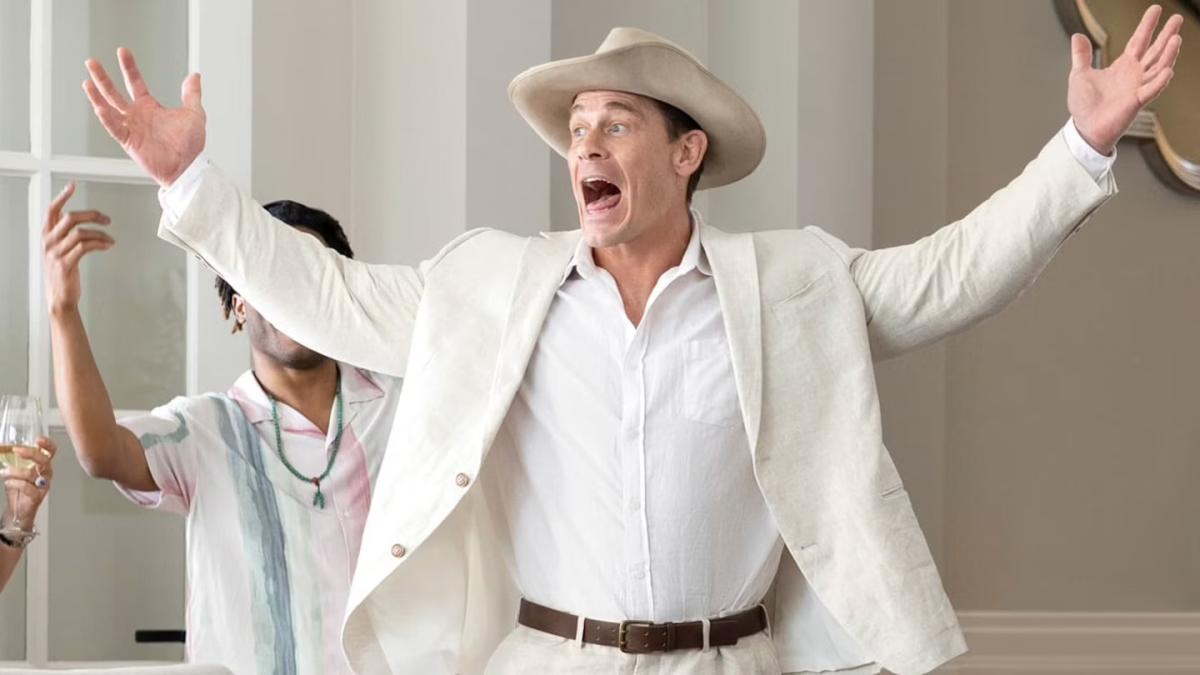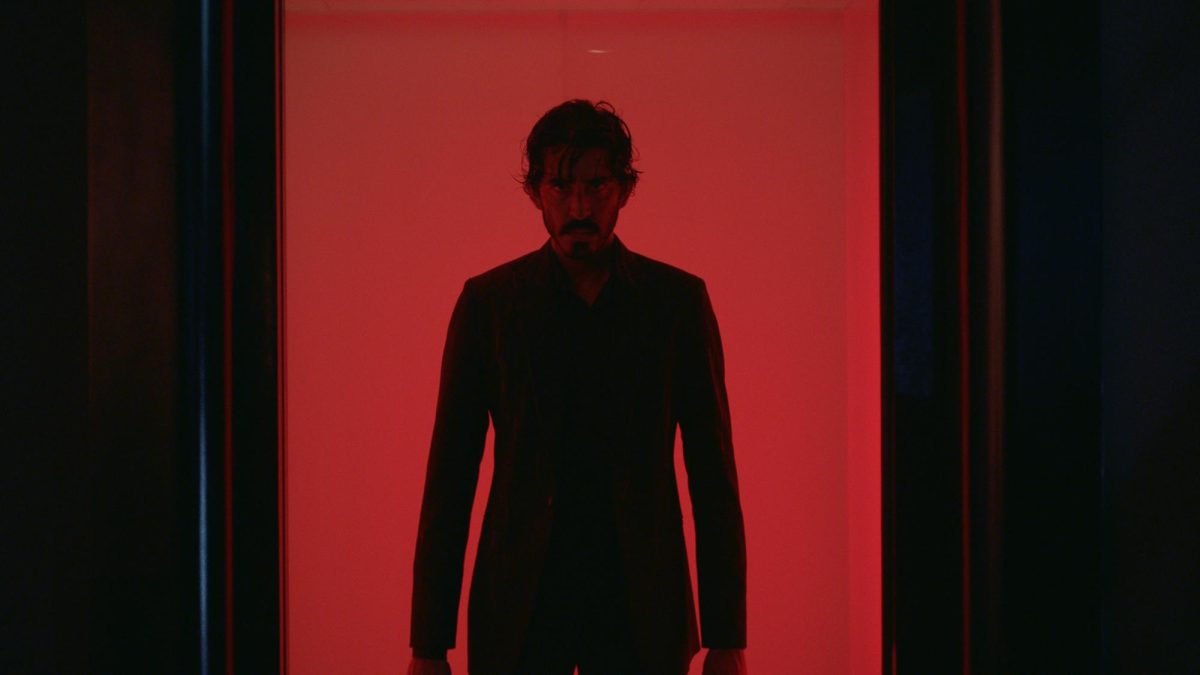It’s 11:30 a.m. on Sixth Street the day after Fat Tuesday. The street is quiet and empty, and what possible reason could I have to be here? The answer is found in the Alamo Ritz, the Drafthouse’s downtown location, where a sold-out audience slowly trickles in for what promises to be an intense marathon of movie-watching: “A Whole Day to Die Hard,” all five “Die Hard” films until we’re finished (or bleeding out of multiple orifices).
A quick montage of “Die Hard” clips unfurls, accompanied by live pyrotechnics, and Drafthouse programmers Zack Carlson and Greg MacLennan take to the stage. They point out to the audience that we’ve all been given all you need to survive: one Twinkie and a Zippo lighter.
DIE HARD (1988, 131 minutes)
I’m craving my morning coffee, but “Die Hard” proves to be an energizing alternative, and the audience reacts to the film like they’re watching it for the very first time — big laughs for each of McClane’s witty rejoinders and applause for his infamous punchline “Yippee-ki-yay, motherfucker!”
“Die Hard” is an effortlessly enjoyable film, with great action, witty dialogue and engaging characters. It’s the best possible version of the blow-‘em-up, giving us one of the genre’s most iconic figures in Bruce Willis’ John McClane and an equally memorable antagonist in Alan Rickman’s Hans Gruber.
Every mention of Twinkies brings another wave of crinkling wrappers. I bite into mine more than halfway through the film. Maybe the Drafthouse ordered up a special batch for us, but they were far more delicious than I remember them being in elementary school — especially dipped in coffee.
“Die Hard” wraps up to uproarious applause, and it’s all downhill from here. Greg and Zack return to the stage, ribbing each other about Zack’s notorious dislike for the next film, and the audience is ready to die harder.
DIE HARD 2: Die Harder (1990, 124 minutes)
It’s easy to see why people pile on “Die Hard 2.” Many returning characters are shoehorned in for plot convenience, McClane’s one-liners are a lot cheesier — probably thanks to Willis’ new improvisational freedom — and the villain isn’t nearly as compelling, despite being introduced while doing naked kung fu in front of a mirror.
Thankfully, there’s an easy way to make bad movies better, and it’s called beer. I can’t resist dipping into the Drafthouse’s special marathon menu to complement my first pint, and the John McClanewich — a steak, onion and cheese sandwich — proves to be delicious.
Far worse films than “Die Hard 2” have fared well on the main screen of the Alamo Ritz, because it’s hard to pick out a film’s flaws when your expectations are being blasted away by the booming surround sound. This film has a higher degree of audience participation than any of the others. Every big McClane moment gets claps and cheers, especially when he stabs a baddie in the eye with an ice pick.
I’m starting to spot recurring themes in the series. McClane’s distaste for technology carries across the first four films, and the film hilariously dates itself when a character tells him to “Wake up and smell the ‘90s.” Even better, this one kicks off the “Die Hard” series’ hard-fought war on science, staging its climax with John McClane fighting terrorists on the wing of a moving airplane before he improbably blows it up with an enthusiastic “Yippee-ki-yay, motherfucker!”
DIE HARD: WITH A VENGEANCE (1995, 131 minutes)
This is another repurposed script, but the film fits comfortably in the “Die Hard” universe, sending John McClane on a series of wild goose chases all over New York. For the “Die Hard” series to avoid becoming stale, they have to expand the scale and up the stakes for each subsequent film, and this one functions as an exciting, promising mission statement for the rest of the franchise.
Jeremy Irons stars as bad guy Simon Gruber, hell-bent on getting revenge on McClane for his brother’s death in the first film. Playing an elaborate game of Simon Says, he forces McClane to team up with sidekick Zeus Carver (Samuel L. Jackson). Jackson’s easy chemistry with Willis is palatable and ends up being the most enjoyable part of the overlong but wildly entertaining “Die Hard With a Vengeance.”
In this one, a bomb (a high-tech, infallible bomb to boot) planted in an elementary school in New York causes mass panic. Similarly, John McClane once again defies physics and logic as he surfs on an overturned semi-truck in a flooded underground tunnel. Just before McClane lets out his trademark line, I order up a Yippie-Pie-Yay Motherfucker: a warm, crispy slice of apple pie.
By the time the credits roll on “Die Hard With a Vengeance,” I’m refreshed and ready for the last two films of the marathon.
LIVE FREE OR DIE HARD (2007, 128 minutes)
Or as I like to call it, “Live Free or Die Pretty Limp.” The first (and only) PG-13 “Die Hard” film has aged since its lukewarm reception upon its initial theatrical release, and it’s easily better than “Die Hard 2,” despite masking McClane’s climactic catchphrase with a gunshot. “Live Free or Die Hard” illustrates a stark contrast between modern and retro action sensibilities, replacing McClane’s traditional sidekick with a dweeby hacker played by Justin Long and eschewing the practical, large-scale action sequences of the original trilogy with spastic editing and CGI-heavy set pieces.
Timothy Olyphant isn’t the most memorable villain, getting to glower a lot but not much else. Even so, it has its moments, especially when McClane leaps from a demolished semi-truck to the wing of a crashing fighter jet just before jumping into the remains of a wrecked freeway to escape the ensuing explosion.
Fatigue starts to set in for the crowd, and several audience members duck out of the theater to hit Sixth Street. The ones that stick around start to get fidgety, and the click of people playing with their lighters only gets annoying after roughly 10 seconds. There are a few cheers here and there, especially when McClane tosses a baddie into some sort of computer equipment that requires intimidating meat grinders, but there’s nary a laugh to be heard when Kevin Smith appears as “comic relief.”
The fourth film ends to a defined smattering of applause. No trailers for the last film — this is the main event, and we’re all business.
A GOOD DAY TO DIE HARD (2013, 97 minutes)
Three minutes into “A Good Day to Die Hard,” I order a John McClane Bloody Mary. After an opening exposition dump, the fifth installment finds McClane heading to Russia to retrieve his son, Jack (Jai Courtney), who has grown up to be capable of large-scale destruction his father could only dream of.
McClane quickly injects himself into the proceedings, and as “A Good Day to Die Hard” unfolds, the overwhelming sound system becomes an aural assault, every tin-eared line of dialogue hurting just as much as the incomprehensible action scenes. After 10 hours of “Die Hard,” it can become difficult to distinguish good from bad and logical from illogical, but you certainly know how to spot a “Die Hard” film, and “A Good Day to Die Hard” is the furthest thing from it.
John McClane is easily one of the most likable heroes of action cinema, and audiences are happy to follow him into any situation, but Bruce Willis isn’t playing John McClane in this film. He’s playing an ignorant, uncaring jerk, stumbling around Russia shooting things and yelling, “I’m on vacation!” McClane doesn’t even have anything to do in the film’s narrative — this time, he’s the sidekick, and when the climactic showdown finally comes, he doesn’t kill any of the film’s main antagonists, leaving the heavy lifting to his son.
“A Good Day to Die Hard” might work if the film were at least well put together, but parts of it are staggeringly incompetent, to the point where entire action scenes unfold without you ever really understanding who is where, and why.
Conclusion
Once “A Good Day to Die Hard” ended, a shell-shocked audience vacated into the chilly hustle and bustle of Sixth Street, relieved to be free of the increasingly sweaty Alamo Ritz. I smelled fresh air at 11:47, the first time in twelve hours and seventeen minutes, and while it was nice to be among the world of the living again, I was kind of sad there were no more explosions to absorb and no more “Yippee-ki-yay, motherfuckers” to celebrate. More than that, I was glad to live in a city where a “Die Hard” marathon on a Wednesday afternoon would play to a packed house. As Greg MacLennan, a Drafthouse programmer, said before the first film, 12 long hours earlier: “We don’t get to do these stupid, ill-advised ideas unless there are dumb, irresponsible people to come do with them with us.”
Bonus Poll: Which is your favorite "Die Hard" movie?
Published on February 15, 2013 as "How to Die Hard".



